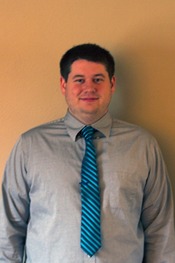Program Information
An Activation Study of Materials and Devices Present in a Proton Treatment Room
D Spitznagel1*, (1) University of Missouri, Columbia,MO
Presentations
SU-E-T-590 Sunday 3:00PM - 6:00PM Room: Exhibit HallPurpose:
The use of protons for radiation therapy is growing rapidly. One consequence of protons interacting with different media is activation. These nuclear reactions induced by the protons, scattered neutrons, and gamma rays, activate different materials encountered, particularly by the therapists. The purpose of this study was to examine the derived nuclides from the activation, and also the decay rate.
Methods:
The study was conducted in our proton therapy facility. Protons are derived from a synchrocyclotron and pass through field shipping systems, apertures, and range compensators to define the beam within the patient.
Included materials of concerns measured; the patient support couch, sheet rock in the wall, solid plastics used for quality assurance and dosimetry, and the passive scattering system itself, which includes brass apertures, and Lucite or blue wax compensators. All devices were studied post irradiation using gamma spectroscopy to determine the nuclides, and a sodium iodine scintillation detector to measure decay, particularly when the dose rate fell to background levels.
Results:
We have also determined from the measurements we will maintain brass apertures for three months before sending them for scrap. Some of the radionuclides arrived from these measurements included Na-22 for the blue wax compensator, C1-34m for the sheetrock, and Sc-44 and Co-60 for the brass apertures. We found compensators made out of Lucite or wax decayed to background in 2 hours. The patient support couch decayed to background in approximately 40 minutes, and sheet rock decayed in 80 minutes. In terms of the aperture layers, the most proximal aperture slab had much higher activity than the distal slab. Also the proximal sides of the slabs were much more activate than the distal.
Conclusion:
We have given proper instruction to therapists performing quality assurance in terms of the handled plastics, and to handle apertures rapidly as possible.
Contact Email:


